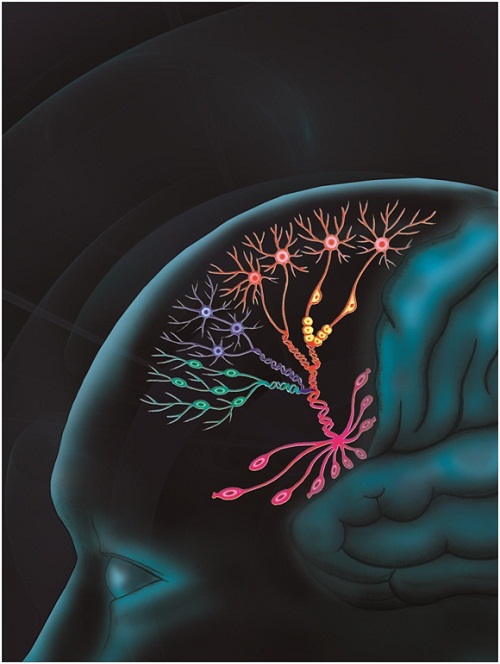Drawing the developmental landscape of the human prefrontal cortex by single-cell RNAseq
A research entitled “A single-cell RNA-seq survey of the developmental landscape of the human prefrontal cortex” was published online in the journal Nature on Mar. 14h, 2018. Professor WANG Xiaoqun of the Institute of Biophysics (IBP) of the Chinese Academy of Sciences, in cooperation with Professor TANG Fuchou and Professor QIAO Jie of the Peking University and Professor ZHANG Jun of the Capital University of Medical Sciences and colleagues, applied single-cell transcriptional profiling to identify cell types in the developing human PFC and distinguished their developmental features.
The prefrontal cortex (PFC) is the cerebral cortex which covers the front part of the frontal lobe in mammalian brain anatomy and has increased six-fold throughout human evolution. This brain region has been implicated in planning complex cognitive behavior, decision-making and regulating social behavior. There is a need for detailed knowledge of the development of the PFC since disturbance or failure of PFC development may contribute to several cognitive deficits seen in patients with neurodevelopmental disorders, such as intellectual disability, autism spectrum disorders and schizophrenia.
In their research, the molecular features of cells in the PFC during human brain development at gestational weeks 8 to 26 were described. The data showed heterogeneity of neural progenitor cells that have the potential of proliferation and differentiation to neurons or to glial cells. Intermediate progenitor (IP) cells, acting as transit amplifying progenitor cells, play a critical role in mammalian cerebral cortex development, allowing neurons to be generated at a tremendous speed in a short period. They found new markers of IP cells and revealed the development feature of these cells. They also illustrated the critical periods of the proliferation, migration and maturation of excitatory neurons. In addition, the data also indicate that there are a few of interneuron progenitor cells in the early period of PFC while they are inactively progressing through the cell cycle, implying interneurons may be generated locally in the developing human PFC. This screening and characterization approach provides a blueprint for understanding human PFC development in the early and mid-gestational stages with which to systematically dissect the cellular basis and molecular regulation of PFC function in humans. It is also a powerful tool for investigating the mechanisms behind neurological diseases related to abnormal structure or dysfunction of the PFC and exploring potential therapies.
This work was supported by National Basic Research Program of China, the Strategic Priority Research Program of the Chinese Academy of Sciences and the National Natural Science Foundation of China (NSFC).
Article link: https://www.nature.com/articles/nature25980

Contact: WANG Xiaoqun
Institute of Biophysics, Chinese Academy of Sciences
Beijing 100101, China
Phone: 86-10-64887377
Email: xiaoqunwang@ibp.ac.cn

